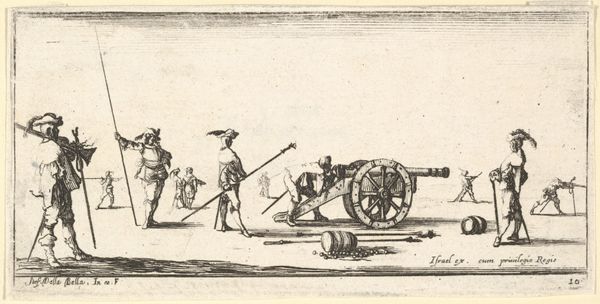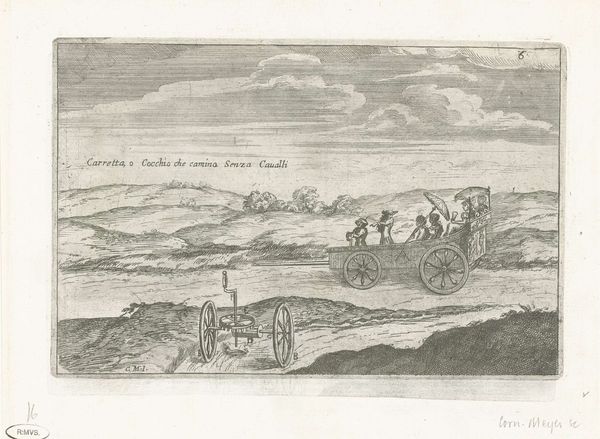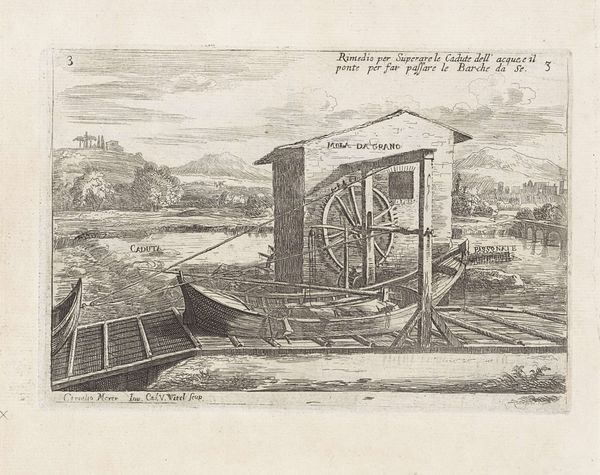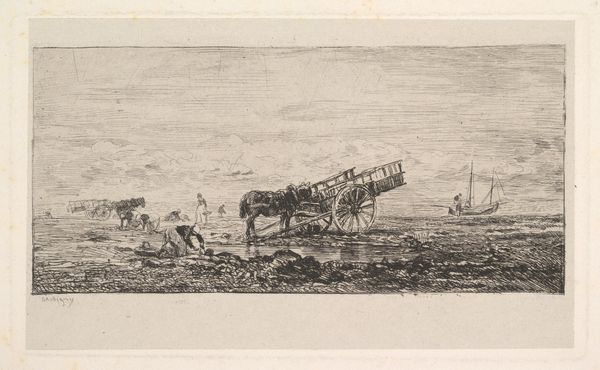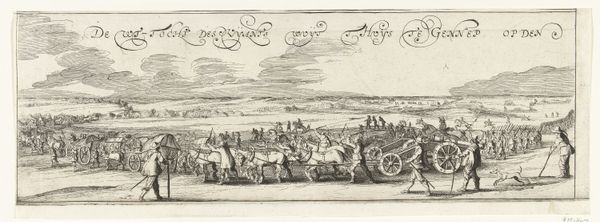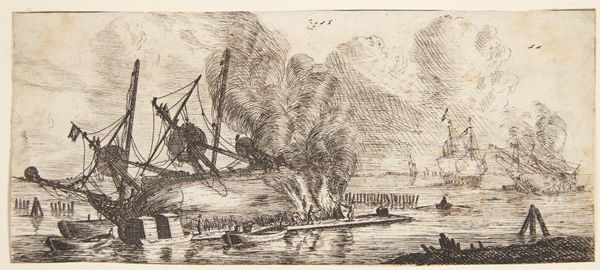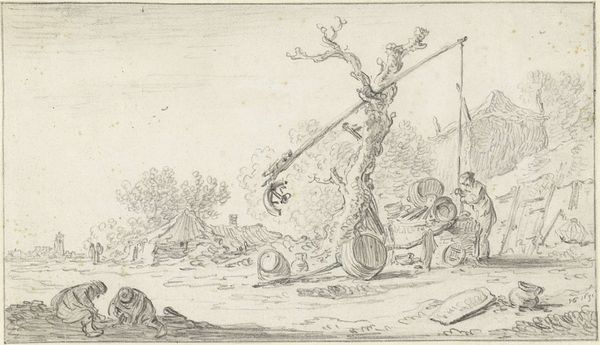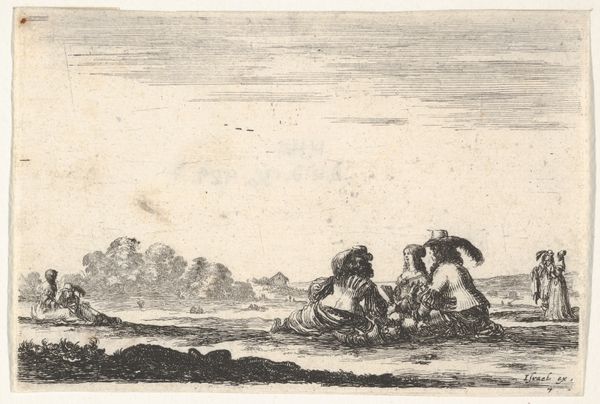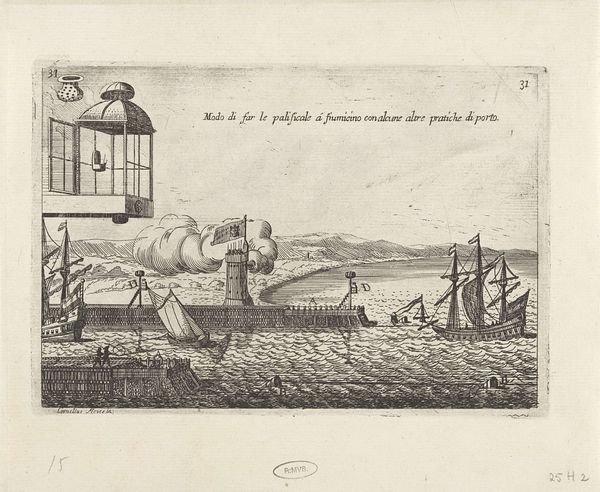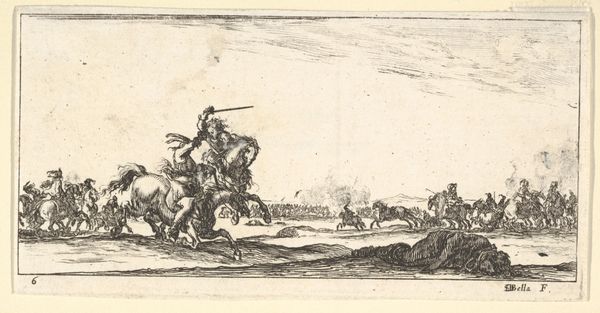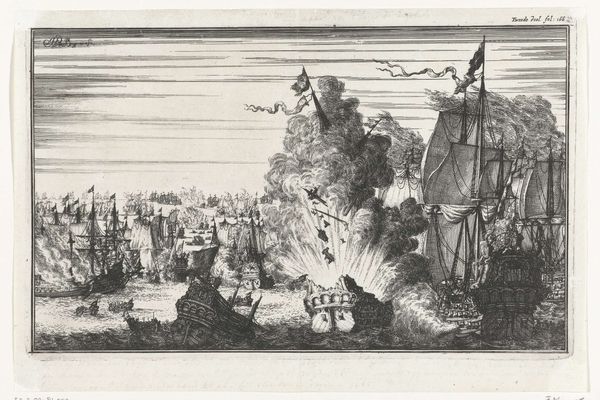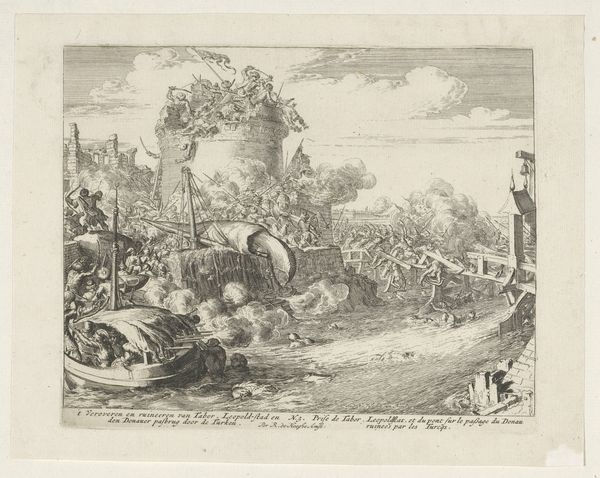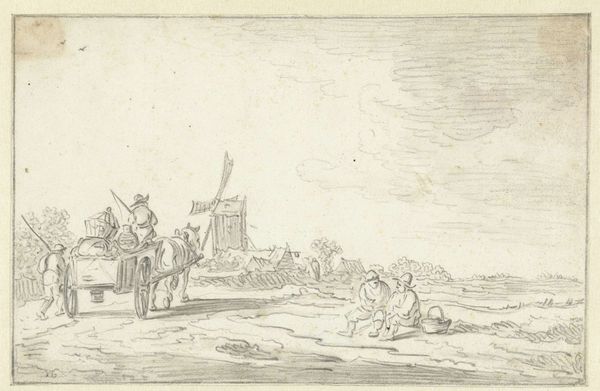
Plate 2: A cannon to the left, a town in the background, from 'Various Military Caprices' (Varii capricci militari) 1636 - 1646
drawing, print, etching
drawing
baroque
pen sketch
etching
landscape
horse
men
pen work
history-painting
Dimensions: Sheet (trimmed to plate): 3 3/8 × 5 9/16 in. (8.6 × 14.1 cm)
Copyright: Public Domain
Curator: This etching, dating from between 1636 and 1646, is "Plate 2: A cannon to the left, a town in the background, from 'Various Military Caprices'" by Stefano della Bella. Editor: It's immediately striking how bleak the scene is, despite the almost decorative detail. The fragility of the pen lines gives it a transient, ghostly quality. You sense that any minute this fragile tableau might crumble to dust. Curator: Yes, Della Bella’s baroque style often contrasts the delicate with the monumental, exploring that tension through allegories of power and conflict. Notice how the detailed pen work evokes an atmosphere of decay but is still ordered by visual structures of linear perspective? Editor: Absolutely, you've got the grand military machine dominating the foreground but it's undermined by the dejected figures and ruined architecture. Are we to celebrate or condemn these tools of power? Is there commentary on the effects of militarization within a wider scope of suffering? Curator: Perhaps both? Cannons, as symbols, are complex. They represent protection, advancement, violence, and oppression, each element coexisting uneasily with the others. Their iconography evolves depending on historical conditions. Think of cannons cast with sacred symbols versus those used for imperial expansion. Editor: Context is paramount. The etching comes at a time of widespread European conflict. It strikes me that this particular rendering acknowledges not the glory but the physical and moral devastation caused by incessant war, and those rendered prostrate by conflict. Curator: We're invited to question the long-term implications of warfare. In visual language, he renders military machinery and costumed figures— juxtaposing it all within this decaying, barren scenery. How intriguing that he does it with what can be easily consumed with a fine aesthetic experience. Editor: Ultimately, what endures beyond aesthetic enjoyment is its relevance to current realities. Even as tools evolve, the nature of violent conflict persists alongside structures of inequality. We must remain critical of such continuous displays of authority. Curator: This piece provides a powerful reminder that symbols resonate through centuries, acquiring deeper and more nuanced meanings. Editor: And of art's capacity to mirror humanity's contradictions.
Comments
No comments
Be the first to comment and join the conversation on the ultimate creative platform.
